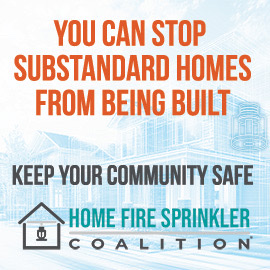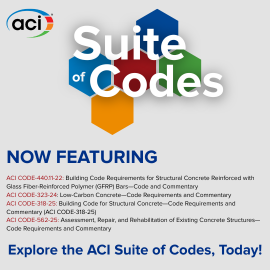
Existing building code essentials: Introduction
![]() The 2018 Code Essentials series are available as valuable companions to the 2018 International Building, Residential, Fire, Energy Conservation, Existing Building and Plumbing Codes. Aimed at all user levels — including first-time users, veteran code users and other professionals such as architects, designers and contractors — these guides use a straight-forward, focused approach to explore code requirements with non-code language, allowing readers to gain confidence in their understanding of the material and build a solid foundation for learning and applying the code’s requirements.
The 2018 Code Essentials series are available as valuable companions to the 2018 International Building, Residential, Fire, Energy Conservation, Existing Building and Plumbing Codes. Aimed at all user levels — including first-time users, veteran code users and other professionals such as architects, designers and contractors — these guides use a straight-forward, focused approach to explore code requirements with non-code language, allowing readers to gain confidence in their understanding of the material and build a solid foundation for learning and applying the code’s requirements.
2018 Existing Building Code Essentials
![]() A fundamental premise of the International Existing Building Code (IEBC) is that the building is in compliance with the International Fire Code (IFC) and the International Property Maintenance Code (IPMC). Both codes contain requirements for existing buildings that are used as a baseline from which the requirements of the IEBC are established. In other words, in order for the IEBC to be used, the building must be a legally existing building. If a building is not in compliance with the IFC or IPMC, the corrections needed to comply with those codes can be made without using the IEBC.
A fundamental premise of the International Existing Building Code (IEBC) is that the building is in compliance with the International Fire Code (IFC) and the International Property Maintenance Code (IPMC). Both codes contain requirements for existing buildings that are used as a baseline from which the requirements of the IEBC are established. In other words, in order for the IEBC to be used, the building must be a legally existing building. If a building is not in compliance with the IFC or IPMC, the corrections needed to comply with those codes can be made without using the IEBC.
There were two fundamental concepts considered when New Jersey developed its version of a rehabilitation code. It was specifically discussed that an existing violation of the state fire code should not hold up a permit being issued under the rehabilitation code. The violation should be a separate citation and the corrective action should be separate from the work desired to be done by the owner. Clearly it may be economical to correct the fire code violation during the rehabilitation project and the fire code official could establish a compliance date consistent with the rehabilitation project, but they should be two separate enforcement activities. Secondly, if a fire code violation is discovered during the course of a rehabilitation project, again the fire code official may cite the owner for the violation but the enforcement is intended to be a separate action.
Structural considerations are treated in more detail in the IEBC because most jurisdictions do not have a code that addresses existing structural conditions like the IFC does for fire safety issues. Therefore, the IEBC does require more structural upgrades for various rehabilitation projects as compared to fire safety issues. For example, if one looks at Alterations – Level 1, there are no specific requirements for fire protection and means of egress other than maintaining current levels. However, there are additional provisions that address various structural items, including reroofing.
In addition to the compliance options about to be discussed, the owner and design professional have the option of complying with the IEBC in its entirety or the building code in existence at the time the building, or portion thereof, was originally built. Historically the rehabilitation codes that led to the development of the IEBC permitted the use of the building code in effect at the time of the project. This happened quite frequently in the early stages of the rehabilitation codes due in part to the fact that design professionals were more familiar and comfortable with the current building code.
While permitted, using the building code in effect at the time of construction can be problematic with respect to determining what code was in effect. The documentation needed to determine the effective code may not be available from the building owner or the code official. While this approach sounds as if it may significantly reduce the requirements, note that the building must still comply with the current editions of the IFC and IPMC. As such, if the owner chose not to do anything, the building would be considered acceptable by the code officials. Any new work would not be permitted to make the building less compliant.
An example of how this might apply would be a rehabilitation project in an existing high-rise building. Let’s assume that the building is not protected throughout with an approved fire sprinkler system and the building code in effect at the time the building was built provided both compartmentation and sprinkler options. If the owner did not want to install fire sprinklers in the building, as might be required by the Work Area Compliance Method, the building code in effect at the time of construction could be used. However, if the IFC as adopted by the jurisdiction requires sprinkler protection in existing high-rise buildings, by a separate action the sprinkler requirement should be enforced. If the adopted fire code of the jurisdiction does not require existing high-rise buildings to be equipped with fire sprinklers, then fire sprinkler protection may still be required at the discretion of the code official based upon the code in effect at the time. Under the IEBC, sprinkler protection may be required in the area where the rehabilitation work is to be performed, depending on the level of alteration and availability of municipal water supply at the high-rise building site.
Click here to read the full Code Essentials excerpt.






